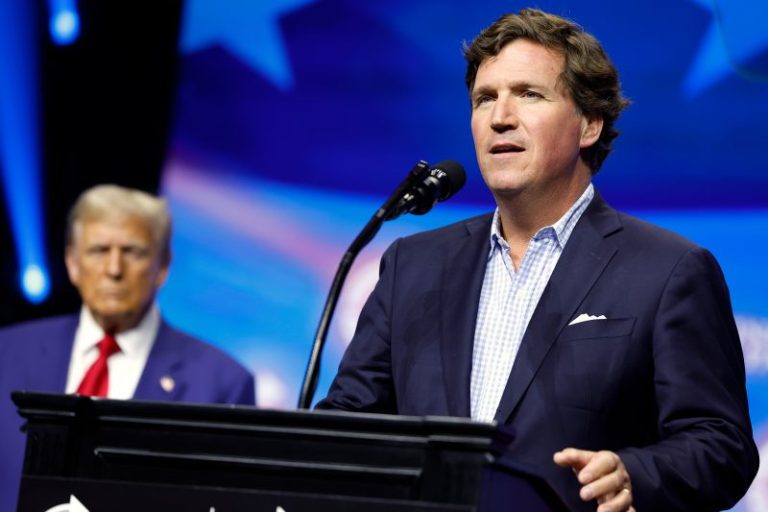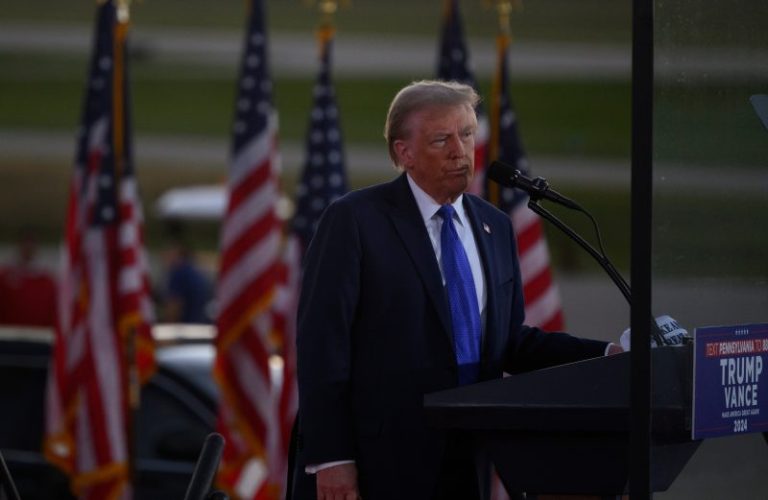Germany and other Ukrainian allies have lifted restrictions on Kyiv firing long-range missiles into Russia for the first time, the German chancellor said Monday, after days of Russia bombarding the capital and other regions with massive aerial attacks.
It marks a significant change in approach from key allies, which until now had largely resisted Ukraine’s requests to use Western-supplied weapons deep inside Russia.
“There are no longer any range restrictions on weapons supplied to Ukraine,” German Chancellor Friedrich Merz said at a European forum in Berlin on Monday. “Neither from the British, nor from the French, nor from us. Nor by the Americans.”
“In other words, Ukraine can now also defend itself by attacking military positions in Russia, for example,” he added.
The announcement comes in the wake of record-breaking drone and missile attacks on Ukraine over the weekend. Russian President Vladimir Putin is facing international pressure to accept a ceasefire deal, including from US President Donald Trump, who has grown increasingly frustrated by the slow progress.
Merz was appointed chancellor several weeks ago – and his declaration stands in stark contrast with his predecessor Olaf Scholz, who had repeatedly rejected Ukraine’s calls to lift the restrictions.
However, Merz did not say whether Germany would supply Ukraine with its powerful long-range Taurus missiles – something he had supported when Scholz was still in power, Reuters reported.
The United States lifted its restrictions last November, with former President Joe Biden authorizing Ukraine to use the US-supplied long-range Army Tactical Missile Systems, or ATACMS, inside Russia.
But that, too, was a controversial decision that took months of discussion to reach. The US refused to even provide ATACMS to Ukraine for the first two years of the war, only delivering the missiles for the first time in April 2024. Some American officials worried about escalating the war, now in its fourth year, while others worried about the Pentagon’s dwindling weapons stockpiles.
Russia has openly threatened that any lifting of restrictions on long-range weapons would mean war with NATO. Putin has warned the West that Moscow would consider any assault supported by a nuclear power to be a joint attack – and that Russia could use nuclear weapons if it was struck with conventional missiles.
Kremlin spokesperson Dmitry Peskov slammed Merz’s announcement on Monday, saying the lifting of restrictions was “rather dangerous,” according to Russia’s state-owned news agency TASS.
“If such decisions are made, they will absolutely go against our aspirations to reach a political settlement and the efforts being made within the framework of the settlement,” he said, according to TASS.
Ukraine’s President Volodymyr Zelensky is expected to visit Berlin on Wednesday, Reuters reported, citing several sources.
Russia’s attacks over the weekend killed more than two dozen people, including children, as Ukraine urged Western allies to continue pressuring Moscow to end the war.
“Without really strong pressure on the Russian leadership, this brutality cannot be stopped,” Zelensky said on Sunday.
Trump on Monday voiced increasing frustration with Putin, saying the Russian leader had “gone absolutely crazy” – while also criticizing Zelensky’s statements as causing “problems.”
Pressure is also building from within Trump’s Republican base, with a number of congressmen – including Sens. Chuck Grassley and Lindsey Graham, and Reps. Brian Fitzpatrick and Don Bacon – urging the president to impose stringent sanctions on Russia.
“It is a time for honesty. Peace talks are having zero effect on Putin,” Bacon wrote on X. “The US and allies must arm Ukraine to the teeth.”












